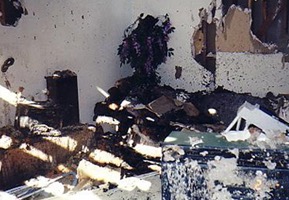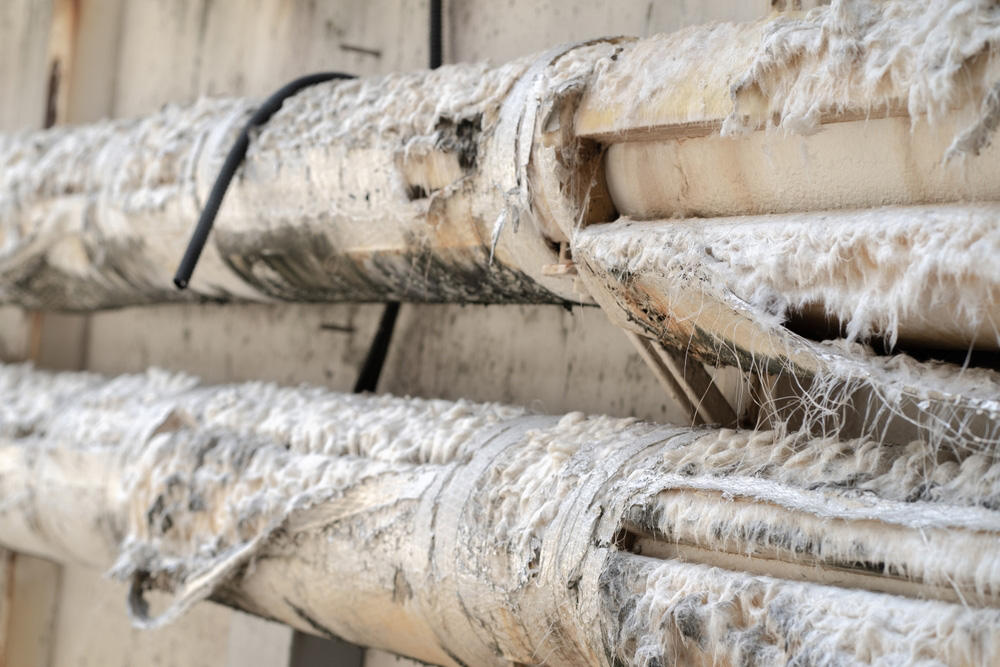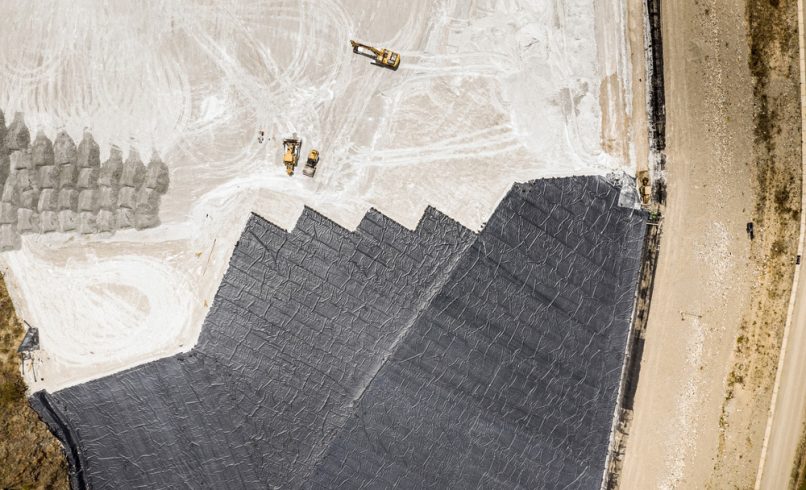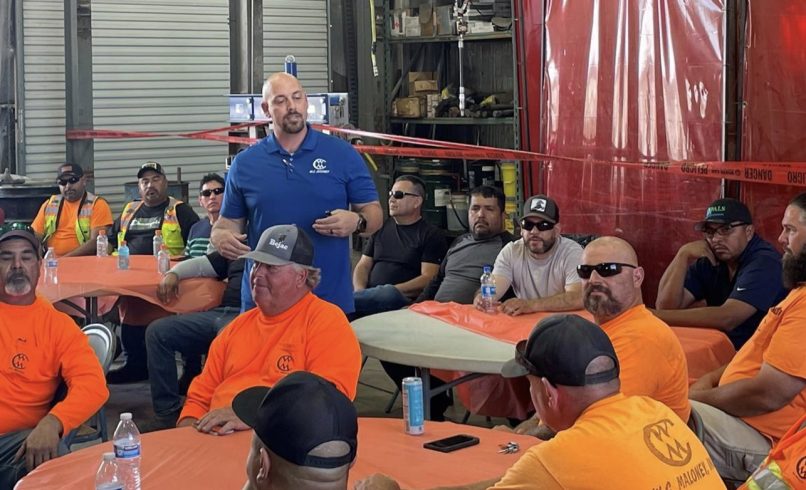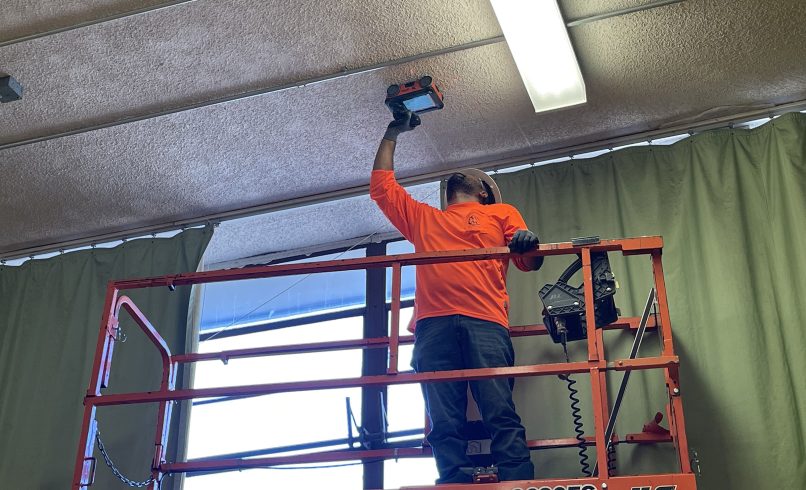The Dangers of Asbestos

Asbestos is synonymous with danger and health risks, especially in the workplace. Here are some quick facts showing just how dangerous asbestos can be:
- 125 million worldwide are exposed to asbestos at the workplace
- 1.3 million construction tradesmen are heavily exposed to asbestos in the U.S.
- 90% of asbestos deaths are from work-related exposure
- California has the most asbestos related deaths in the country
- Asbestos is banned in 68 countries (but not the U.S.)
Let’s take a closer look at asbestos, and explore what ways we can avoid dangerous exposure.
What is Asbestos?
Asbestos is a naturally occurring mineral composed of thin, durable, microscopic fibers. At one time, asbestos was considered a “miracle mineral.”
Known for its highly-effective resistance to heat, electricity, chemicals and corrosion, and as an acoustic insulator, asbestos was a popular additive to thousands of construction and manufacturing products throughout the 1900s. (The term “asbestos” comes from the Greek word “amiantos,” which translates to “inextinguishable.”)
Despite its benefits for construction and manufacturing, asbestos is widely considered an extremely dangerous, hazardous material.
A Brief History of Asbestos in the U.S.
Mining for asbestos started in 1894 and grew to its height in the United States in the late 1960s and early 1970s. California has some of the largest naturally occurring asbestos deposits in the world, where it is found in ultramafic and serpentine rock, often near fault zones. As such, the state had the highest concentration of asbestos mining in the country, with the Calaveras mine in Copperoplis being the biggest producer during the 60s and 70s.
By then the dangers of asbestos were becoming obvious as the causal link between asbestos and cancers and health risks such as mesothelioma was mounting. The Environmental Protection Agency (EPA) banned several types of asbestos in the mid-70’s due to concerns over the health effects associated with exposure to such materials. Subsequent strict federal asbestos regulations helped diminish its use and risks, causing the mining of asbestos to decline until its complete end when the last asbestos mining operation closed in California in 2002.
However, despite a dramatic decline since, and the creation of strict exposure standards, the use of all asbestos is not legally banned in the United States, like it is in many other countries around the world.
How Dangerous is Asbestos?
Asbestos is very dangerous due to the durable microscopic fibers it releases when disturbed. When those fibers are inhaled it can lead to serious health risks.
Prolonged exposure to asbestos fibers has been linked to life-threatening illnesses, such as:
- Lung cancer
- Mesothelioma (a cancer attacking the tissue lining internal organs)
- Asbestosis (an asbestos-specific chronic lung disease)
When is Asbestos Dangerous?
Most asbestos is not hazardous when it is in its natural state. It is only dangerous when it is disturbed and releases asbestos fibers into the air, creating the potential for fibers to get inhaled into the lungs.
After becoming airborne, some fibers may be trapped by the mucous membranes of the nose and throat and removed if exposure is known. However, the true health problems occur when the fibers pass deep into the lungs, or are swallowed, and enter the digestive tracts. This may lead to health concerns decades in the future.
Asbestos is most hazardous when it is “friable”, meaning that it is in a state that can be crumbled by hand and thus releases fibers into the air.
For example, sprayed-on asbestos insulation is highly friable, whereas asbestos occurring in floor tile is not.
It is important to note that asbestos containing building materials such as ceiling and floor tiles, cabinet tops, roof or siding shingles, will generally not release asbestos fibers unless they are damaged or otherwise disturbed in some way. If the fibers are not released into the air, the danger is minimized.
How to Prevent Dangerous Exposure to Asbestos
Asbestos is not to be messed with. Since asbestos can be found in almost any home and commercial property built prior to 2000, it is crucial to prevent dangerous exposure to asbestos by taking various precautionary measures.
The only truly safe way to do so is work with a remediation expert trained in asbestos abatement (the containment and removal of asbestos).
The process of safe asbestos abatement typically includes:
- Identify asbestos-containing materials
- Wear protective gear and respiratory protection
- Follow asbestos removal regulations
- Minimize disturbance to asbestos materials
- Properly dispose of asbestos waste per code
- Conduct regular air monitoring on-site
- Provide medical monitoring for at-risk workers
Avoid any DIY removal of asbestos.
If you suspect the presence of asbestos — whether you’re a homeowner, business employee or construction tradesman — do not take measures into your own hands. Avoid touching the material as much as possible and isolate the area. If you can capture a small sample safely, without causing it to crumble, then you can send it to be tested by a qualified laboratory.
But your best option will always be to call an accredited asbestos inspector to handle the identification, sampling and testing for you.
Asbestos is classified as a hazardous material and should be treated like any other. It’s essential to take asbestos-related risks seriously and follow all safety guidelines and regulations in areas where asbestos may be present.
Asbestos in the Construction Industry
Because of its “indestructible” nature, asbestos was considered inherently valuable to a wide variety of manufactured products. The construction industry is rife with examples of homes and buildings erected throughout the 20th century using asbestos. This includes an exhaustive list of construction materials, including:
- Cement
- Furnace or pipe coverings
- Insultation
- Ceiling Tiles
- Fireproofing materials
- Drywall
- Roofing
As regulations tightened and knowledge of the health risks of asbestos grew, asbestos materials were no longer allowed to be used as standard construction material. That bodes well for the elimination of hazardous materials in new buildings. However, many older homes, schools, and buildings still have asbestos materials which can become airborne during a renovation or demolition process.
Considering that these older buildings still pose risks to the occupants, the asbestos remediation business is critical to the safety and well-being of the public and construction teams.
Remediation companies must follow stringent safety and compliance protocols for everything from the surveying of the buildings to demolition rules and disposal of hazardous materials. Remediation partners must be chosen wisely for this immensely important job of keeping our people and environment safe. Visit our Remediation page to learn more about our asbestos removal services for the commercial space.
Sources: mesothelioma.com, California Air Resources Board.

